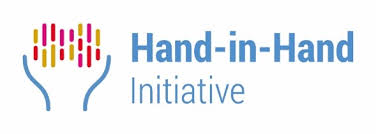Hand-in-Hand Investment Forum

- 18 Oct 2024
In News:
Recently, the Director-General of the Food and Agriculture Organization (FAO) inaugurated the third Hand-in-Hand Investment Forum.
Purpose and Goals
- Objective: To accelerate the transformation of agrifood systems to address global challenges:
- Eradicate poverty (SDG 1)
- End hunger and malnutrition (SDG 2)
- Reduce inequalities (SDG 10)
- Target: Focuses on improving the lives of poor and vulnerable populations by:
- Raising incomes
- Enhancing nutritional status and overall well-being
- Strengthening resilience to climate change
Key Features of the HIH Initiative
- Launched: 2019 as a flagship program by the Food and Agriculture Organization (FAO).
- Primary Focus Areas:
- Geospatial and analytics-driven approach: Utilizes advanced geospatial modeling, biophysical, socio-economic data, and analytics to identify key territories for intervention.
- Market-based transformation: Aims to create sustainable, market-based solutions for agricultural development and food systems transformation.
- Value Chain Development: Focus on developing value chains for priority commodities to boost incomes and food security.
- Agro-Industry Building: Strengthening agro-industries and introducing efficient water management and precision agriculture systems.
- Digitalization: Introducing digital services for better agricultural planning and productivity.
Key Areas of Intervention
- Agricultural Transformation: Identifying territories with the highest potential for transformation.
- Sustainable Management: Focus on sustainable practices in forestry, fisheries, and land management.
- Climate Resilience: Building systems to mitigate the effects of climate change and reduce vulnerability.
- Food Loss Reduction: Addressing food losses and waste across agricultural value chains.
Global Participation
- Member Countries: 72 countries have joined the initiative, collaborating on shared goals for agrifood systems transformation.
The Hand-in-Hand Investment Forum
- Purpose: A platform to mobilize investments for the successful implementation of agrifood transformation programs under the HIH initiative.
- Event: The third Hand-in-Hand Investment Forum was recently opened by the FAO Director-General to discuss challenges and solutions for global agrifood system transformation.
About the Food and Agriculture Organization (FAO)
- Established: October 1945, it is the oldest permanent specialized agency of the United Nations.
- Mandate:
- Improve nutrition.
- Increase agricultural productivity.
- Raise the standard of living in rural areas.
- Contribute to global economic growth.
- Headquarters: Rome, Italy.
- Members: 194 Member States and the European Union.
Key Role of FAO:
- FAO leads international efforts to combat hunger and malnutrition worldwide.
- Supports member countries in implementing agricultural and food security programs.
Strategic Importance
- The Hand-in-Hand Initiative is integral to FAO’s mandate, focusing on countries with the most pressing needs due to poverty, hunger, or crises (natural or man-made).
- It enhances cooperation among nations to tackle global food security challenges, with a particular emphasis on countries with limited national capacities.
State of Food Security and Nutrition in the World-2023 (FAO)
- 31 Aug 2023
What is the News ?
A recently published report, ‘State of Food Security and Nutrition in the World’ (SOFI) 2023, shows that the cost of a healthy diet has increased in India in recent years, but it is still lowest among the BRICS countries (including the newly added six countries) and India’s neighbours.
Facts About:
- The ‘State of Food Security and Nutrition in the World’ (SOFI) 2023 report prepared by FAO and United States agencies has been released with the theme of “Urbanisation, agrifood systems transformation, and healthy diets across the rural-urban continuum”.
- According to a UN agency report 74% of people in India can’t afford a healthy diet because of increasing costs.
‘State of Food Security and Nutrition in the World’ (SOFI) 2023 :-
The report is published by the partnership of Food and Agriculture Organisation(FAO) of the United Nations with the United States agencies i.e International Fund for Agricultural Development (IFAD), United Nations Children’s Fund (UNICEF), World Food Programme (WFP) and World Health Organisation (WHO).
The aim of the report is
- ending hunger
- achieving food security
- improving nutrition
- to provide an in-depth analysis for achieving this goal in the context of the SDG.
FAO:-Each year, FAO’s most deeply scrutinised report presents the leading numbers of undernourished people worldwide, while advocating for strategies against hunger and malnutrition.
SOFI 2023 related to India:-
PPP report:-
- The concept of PPP is 1ppp dollar in the United States should be able to buy the same amount of goods in either India or Brazil or in other countries.
- xPPP dollar per day means how much would it cost to buy a very simple healthy diet in every country.
- According to this data India compared to its other countries or other regional countries of the world itself has the lowest PPP dollar for a healthy diet.
According to another data which shows the share of the population that is unable to afford a healthy diet in 2021, for instance 74% of the Indian population cannot afford a healthy diet and the fourth highest share in the country itself .
So when it comes to afford a healthy diet, India comes fourth.
Because of stagnation, poor income levels, General stagnation, people of India are not able to afford the cheapest healthy diet in the world.
According to Above two report
- India doesn’t have to spend too much to get a healthy diet.
- 74% of our population cannot afford a healthy diet.
Conclusion:-
The share of people able to afford such a healthy diet is still low: India is at the bottom of that list because income levels are stagnant or going down.
- For example, while in mumbai the cost of meals have risen by 65% in last 5 years wages and salaries have only risen by 28% to 37% , so it shows that prices are rising but our incomes are not rising therefore though India have the cheapest food in the world there is most of people of india can’t afford it.It is not about the can’t afford food it’s a about a nutritional healthy diet divided by FAO and the UN.
Source: https://www.fao.org/documents/card/en?details=cc3017en
